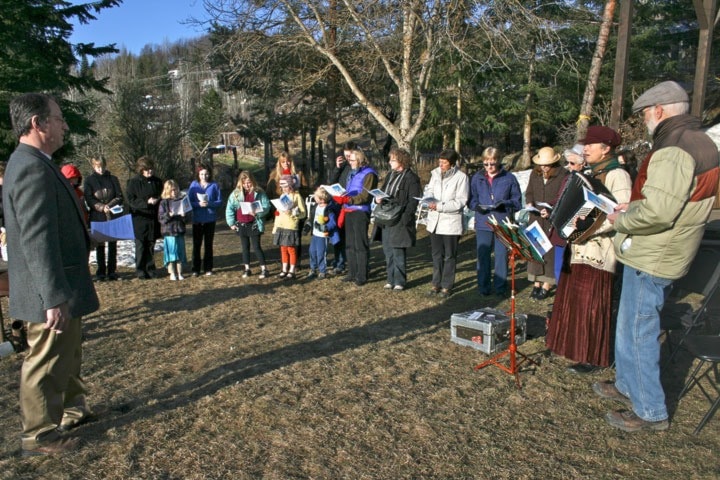A merry band of United Church goers and friends gathered at the Kerby’s farm in Happy Valley to welcome the bright rays of dawn on Easter Sunday.
As the Kerby’s fruit trees were bathed in eastern light and their barn filled with the sounds of chickens laying and baby goats asking their mothers for milk, Janet Marshall led the early bird congregation in hymns about walking with God in gardens and seeing the divine in the breaking dawn.
Church minister Keith Simmonds took a moment to reflect on the origins of Easter traditions, going back long before Christian missionaries brought Christ’s message to the British Isles.
Back then, Ancient Saxons worshipped Eostre (or Oestra), the Saxon version of the even more ancient Germanic moon and fertility goddess, Ostara. The Germanic tribes believed that Ostara conceived a child with the sun god one spring and gave birth nine months later to Yule, the winter solstice.
The Saxons held a feast on the full moon following the spring equinox and celebrated with symbols of new life: bunnies and eggs.
In one legend, Eostre found an injured bird on the ground one winter and saved its life by transforming it into a hare. But the transformation was incomplete, so although the bird took on the appearance of a hare, she retained the ability to lay eggs — which she decorated and left as gifts to her saviour, Eostre.
In science, Eostre also gave her name to the female hormone estrogen.
As the day warmed, the congregation returned to their iconic red-roofed church to enjoy hot cross buns, another Easter tradition that predates Christianity. Originally the cross represented the four directions, or the four quarters of the moon, but now also recalls Christ’s crucifix.
In later years, the buns were given to monks for success in learning the scriptures, Simmonds said.
The United Church describes itself as an “inviting, open and accepting community where young people of all ages can explore and celebrate their spirituality.” Services are Sundays at 9 a.m.
